Hawaii travelers booking flights for this fall and beyond are suddenly caught in an airline war reshaping trans-Pacific fares, and most don’t even know it’s happening. Seattle has become the front line between Alaska Airlines, now owner of Hawaiian, and Delta Air Lines, which has turned the city into its West Coast fortress. What began as a duel for long-haul prestige is now becoming more global, shaping how much Hawaii travelers pay, how often they can fly, and which planes serve the islands.
Seattle isn’t just another mainland connection anymore. It’s where Alaska and Delta are fighting for control of flights crossing the Pacific, and Hawaii travelers are the ones to feel the turbulence first.
What changed, and why it matters to Hawaii travelers.
Alaska’s purchase of Hawaiian Airlines gave it something it never had before: wide-body aircraft and true long-haul reach. Those planes open new international opportunities but also connect directly to the airline’s Hawaii network planning, since every reassignment affects island capacity.
Delta, which declared Seattle a hub years ago, is not giving an inch. It has added new trans-Atlantic and trans-Pacific service, rolled out upgraded cabins, and expanded lounges to keep its premium edge and hold onto its share of Seattle travelers. And they clearly aren’t done yet.
Federal approval of the Alaska/Hawaiian deal included service protections for core Hawaii routes, but those safeguards don’t freeze pricing, only continuity.
The duel, centered thousands of miles away from Hawaii, determines how many seats leave Seattle and other west coast gateways each week bound for Honolulu, Maui, Kona, and Lihue, and what those seats will cost. When Alaska deploys a wide-body to Europe or Asia, that plane is no longer flying to Hawaii. When Delta shifts a long-haul jet to Asia, or for that matter to Hawaii, the same thing happens. Each small change ripples across the islands’ visitor pipeline, tightening or loosening availability, and it is about to get a lot more volatile.
What we are tracking next.
Beat of Hawaii will monitor the key signals that show how this tug-of-war touches the islands. We are conducting weekly fare checks on a number of primary routes connecting Seattle and Honolulu, Maui, Kona, Lihue, and Hilo, across spring break, summer, and end-of-year holiday travel windows. This includes reviewing aircraft assignments 90 days out rather than 30 days out to spot last-minute changes that may tighten seat supply.
We are also tracking promotional sale frequency compared with last year to see whether overlapping schedules create brief price dips or fewer discounts. And we are watching gate and terminal changes at Seattle-Tacoma that hint at schedule expansion or consolidation affecting Hawaii departures. Together, these signals should show where fares are heading before the next season’s sticker shock or surprise sale hits.
Two ways seats disappear: fewer planes fly, and fewer cheap seats exist.
Capacity is the blunt instrument that keeps Hawaii fares in motion. Add one flight or swap in a larger jet, and prices tend to ease. Pull a route or replace a wide-body with something smaller, and they will climb fast. If Alaska takes a single widebody off Hawaii duty to start another long-haul, that’s hundreds of seats gone in a week to just one island. Spread that across multiple islands and weeks, and the change shows up quickly when you go looking for tickets.
Product changes make the same problem harder to spot. As airlines chase higher-paying travelers with new premium-dense seat layouts, Wi-Fi, and other cabin upgrades, the share of lower fares shrinks. The mix shifts upward, as the airlines are first to boast about, which quietly raises what Hawaii travelers end up paying. It’s not a big overnight jump, more of a steady tightening, where there are fewer cheap seats, and best fares disappear first and stay gone longer.
Recent searches already show how fast this can happen. Weekend flights from Seattle to Honolulu can jump a few hundred dollars in just a few days, while midweek seats stay steady. Prices now move in waves tied to aircraft schedules and overlapping sales, not just the calendar season.
How to book smarter while the wars play out.
- Buy earlier for peak periods, because Hawaii’s school breaks and holidays remain the most sensitive to both high prices and capacity swings. With both carriers experimenting, waiting too long can mean paying far more once one side chooses to reallocate planes elsewhere.
- Keep an eye on aircraft changes, since airlines often finalize equipment well in advance of departure. A sudden switch to a smaller jet means fewer seats and less chance of a sale, just as new premium-heavy aircraft on your route signal that the lowest fares will vanish fast.
- Look for shorter sale windows, since airlines sometimes release overlapping promotions that they pull within days. Subscribe to fare alerts and move quickly when those do pop up.
- Focus on value rather than loyalty going forward, and as reward programs settle. Alaska and Hawaiian’s Atmos and Delta’s SkyMiles continue to adjust redemption values and earning rates. During this transition, book your flight based on schedule and price instead of chasing points that will head down in value over time.
What this means long term.
This airline war will not end anytime soon. Seattle is becoming the hinge for nearly all West Coast traffic to Hawaii, and as both airlines refine their global networks, that balance will keep shifting. In some seasons, added capacity could push prices down and open new flight times. In others, premium upgrades and aircraft redeployments could pull fares up even higher.
For Hawaii, that means the likelihood of more volatility than the islands have seen in years. Routes that once priced steadily between spring and summer may now behave more like the stock market, reacting to aircraft moves and schedule changes. Competition generally helps travelers in the long run, but the trade-off right now is unpredictability: better deals one week and limited options the next.
Help us track the changes.
We’re following this story as it unfolds and want to hear what you’re seeing. Beat of Hawaii will also keep an eye on the same searches and share when those numbers shift. What happens next in this airline battle will shape what Hawaii travelers pay each time they look for flights.
If you’ve been watching fares between the West Coast and Hawaii for upcoming trips, let us know your route, travel dates, and the lowest price you’ve spotted.
Photo Credit: Beat of Hawaii at Queen’s Surf Beach in Waikiki.
Get Breaking Hawaii Travel News
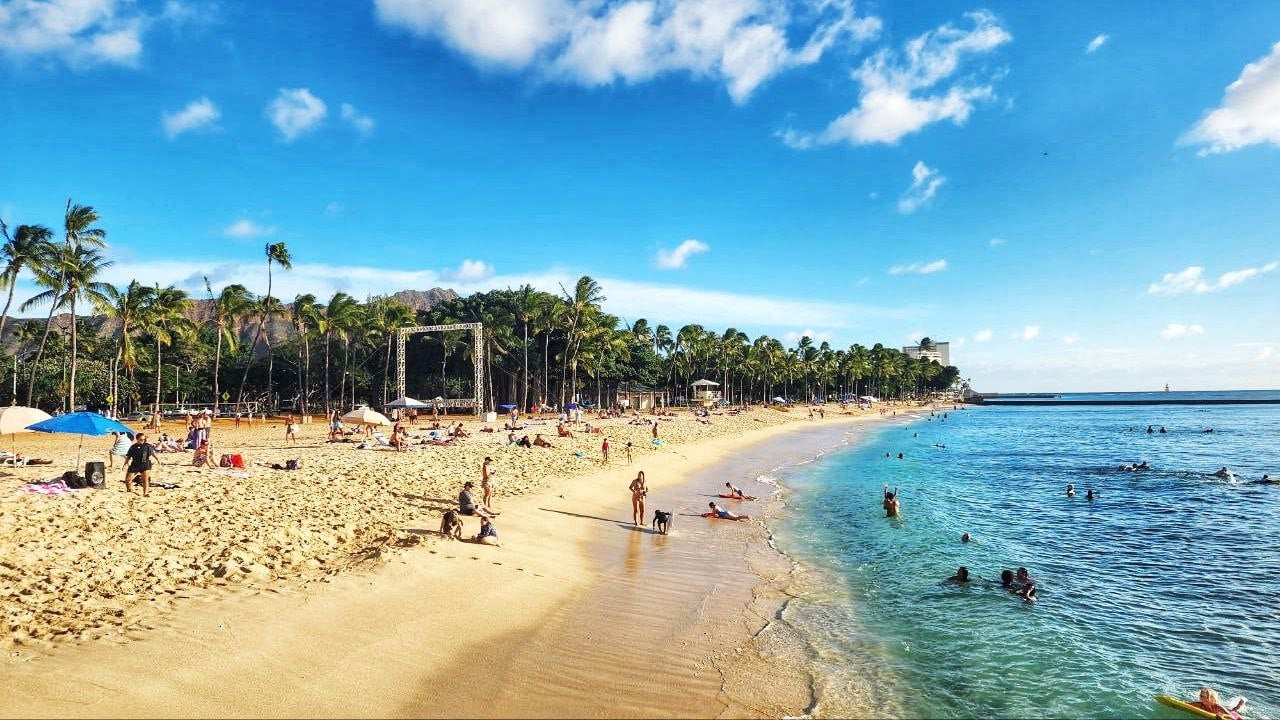
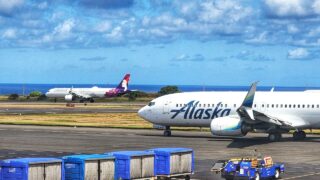
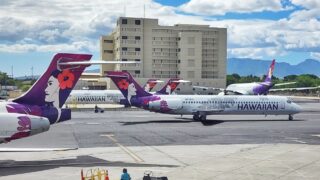
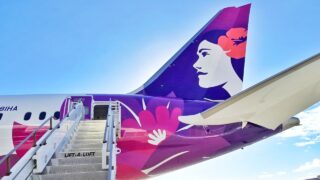

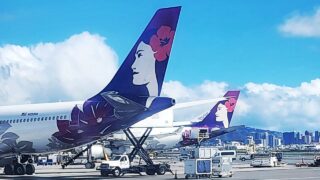

It seems that Alaska wants to Dominate routes from SoCal to Hawaii. Los Angeles, Long Beach, Ontario and now adding Burbank and John Wayne Orange County, the only airport with commercial service that will not serve Hawaii is San Bernardino. Of course San Diego has been a strong player too. For me, by the luck of location that means I will have six airports for our Hawaii travels, all within a 45 minute drive, some less. Of course this being Southern California, any of those can turn into a two hour drive!
It’s a long and uncomfortable flight when it’s a small aircraft.
I wish all the airlines would take the route more seriously.
Give us the biggest airplanes. Please.
What about United? For years they were the dominate carrier to Hawaii…
I’ve been traveling to Hawaii for years and frankly the prices I am seeing right now are out of this world. We have booked from Seattle to Kona for years paying no higher than 750 round-trip right now we are seeing $2000 round-trip. I do not see the merger between Hawaiian and Alaska is a positive it is caused for less competition and higher prices. This is nothing other than greed and price gouging. I’ll be rethinking my loyalty to Alaska Air Airlines for the future.
SEA is approaching maximum space for A/C gates. Especially wide body international flights. PDX is the city to watch. PDX will see a lot more domestic flights.
For me, Hawaiian Air has become just a puddle jumper, Interisland Only. Going to the mainland it’s Alaska Air. Going to Korea it’s Korean Air. Not really interested in going anywhere else.
Let’s hope that delta holds strong! The Hawaiian sellout to Alaska is just hired! Gives Alaska airlines one more advantage over not ever needing to be customer focused. They are not even kind as the transition is in place with Hawaiian and Alaska. There is no aloha from Alaskan airlines! The customer service at the check in counter gives rough a new definition. The flight attendants – well, let’s just say after they pass you your cookie and give you a cup of coffee they only resurface one more time with a trash bag. It is social flight attendants happy hour and the rest of us is angler message do t bother them. Meanwhile we get hit with increased tickets, a cracker that cost .003 cents, cup of coffee that is .005 cents and a flight attendant on average time per customer is 15 seconds. AI can do a better job the a human in an organization like Alaska air.
Jane, maybe it’s your attitude that’s the problem. Alaska Airlines is one of the better run airlines that I’ve seen. If they didn’t purchase Hawaiian Airlines it would have gone out of business. Every airline has it’s not so wonderful employees, Alaska has been great in my opinion.